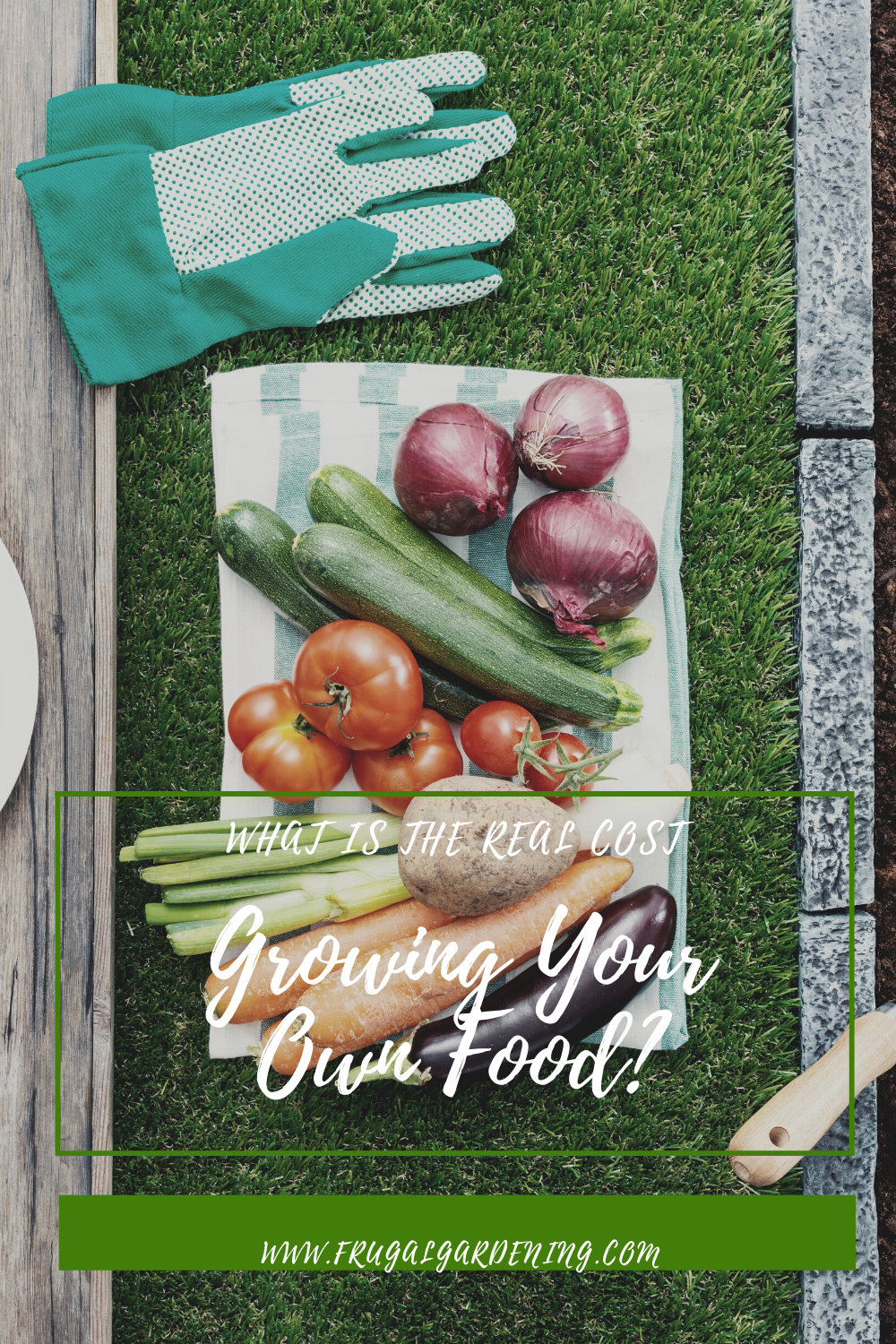
What’s the real cost of growing your own food? This is a loaded question with a lot of answers. You’ll have to spend some initial cash to set up a garden, but ultimately, it can be as expensive as you want it to be. Here’s a breakdown of the costs to expect when setting up a garden to grow your own food.
The real cost of growing your own food
Let’s start with the basics. These are the things you absolutely need to grow food—the bare minimum required involves:
- Soil. You can get this for free if you’re digging up in-ground beds. The cost goes up if you plan on DIY-ing raised beds or buying pre-fab containers. The benefit of in-ground beds is that they’re free to install. But they do require some manual labor. Also, not everyone has high-quality soil on their property. Starting a garden in very poor soil can actually end up costing you more in the long run because you’ll need to add nutrients and work hard to improve fertility. In some cases, DIY or storebought beds are a better, more economical option.
- Seeds. Obviously, you can’t start an edible garden without seeds! Buying starter plants from a nursery is a possibility, but you’ll get way more bang for your buck with a packet of seeds. On average, a packet of seeds typically costs less than $5, depending on the variety. And most packets include enough seeds to grow many plants.
- Water. The cost of water depends on where you live. Where I’m located, water is free to use with minimal restrictions when it comes to gardening. But I’m also cognizant that wasting it has a huge impact on the environment. Cost analysis doesn’t just involve factoring in real $$$ but the potential for harm. In some places where drought is an issue, the cost of growing your own food involves calculating the cost of water.
- Light. If you’re growing outdoors, sunlight is free! Yay!
- Nutrients. Even if you start with perfectly fertile soil, you’ll need to feed your plants and replenish the soil at some point. Starting a compost pile involves minimal costs, but it can take a while for organic matter to break down. If you don’t want to start a pile, check with your town. Many municipalities give away free compost to interested citizens. Some farms also share compost for a small fee.
Oher costs of growing your own food
If you only factor in the basics, you’ll conclude that growing your own food is ultra-cheap. But gardening also involves a lot of challenges and unexpected events. Pests, for instance, can quickly turn a gorgeous edible garden into a leafy patch full of holes. Last year, I spent money on pest covers. I didn’t anticipate needing to do this, but it was an additional cost I had to factor into my budget.
Are there any other real costs of growing your own food? You betcha!
When someone asks me about the real cost of gardening, I make sure to mention the time aspect. Consider the time and effort you put into your garden as a type of cost. A garden doesn’t just produce food that ends up automatically onto your plate. You need to harvest and prep ingredients once they’ve matured. You need to be willing to put in the time and effort. And in today’s modern world, time and effort often go hand in hand with $$$.

Steph Coelho is a freelance writer gardening in zone 5b. She is a certified Square Foot Gardener and has taught various garden-related workshops. When she’s not digging in the dirt or writing, she’s cooking up fresh produce, running, or listening to her favorite podcasts.
Leave a Reply